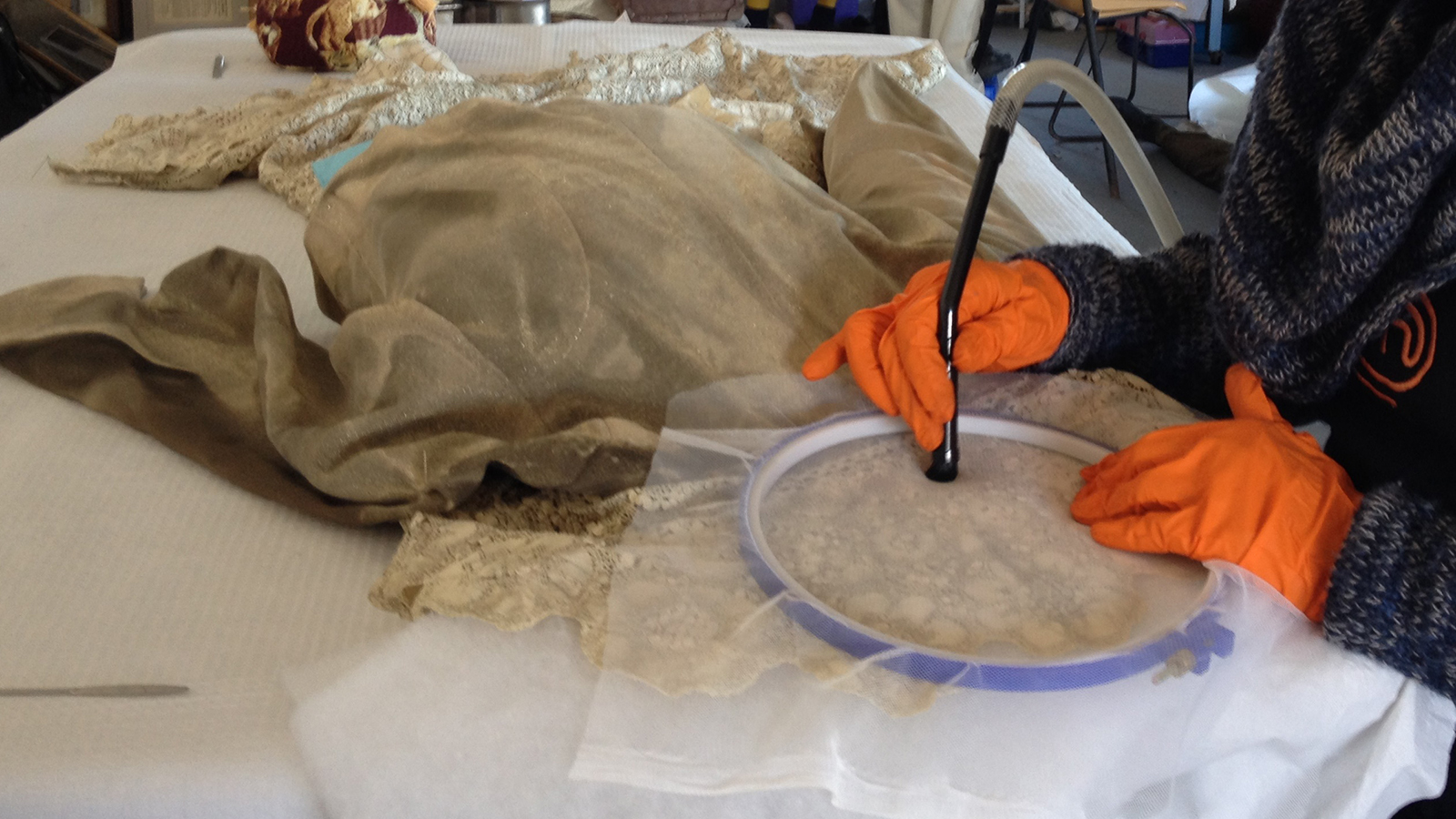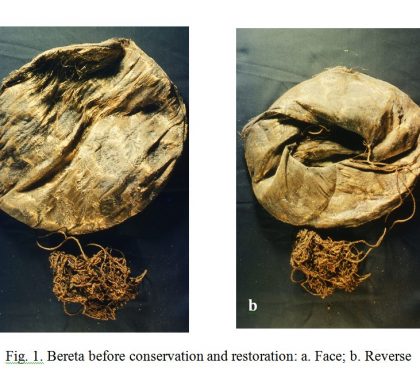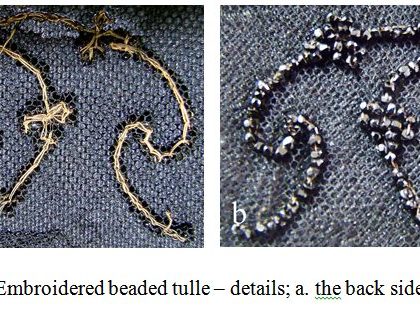Disaster Recovery

Smoke and water damage are the greatest risks to textiles. Like paper, textiles become structurally weaker when wet so moving with an all over support is essential. If possible lay the object as flat as possible so that areas of dark dyes are not near lighter areas. This will prevent the transfer of dye from one area to another. While you may rinse debris off with clean, distilled water, it is highly recommended that you contact a textile conservator. If you cannot reach a conservator immediately, you will need to dry the object as thoroughly as possible. Once again, lay it flat if possible on a clean cotton sheet with good air circulation. The sheet may loosely cover the object to prevent airborne particles from settling on and adhering to the damp surface. Sometimes it may be advised to freeze the textile until a conservator or restorer can be reached, but as this involves drastic temperature and humidity changes and will cause the expansion and contraction of the fibers, it is best to ask a conservator before doing so. When addressing smoke damage the same general rules should be applied. Do not use ozone to remove odor as it will damage the fibers and accelerate the objects aging.
Archival materials such as barrier films, acid-free board, rolling tubes or storage boxes are available through art supply stores and conservation supply catalogues. Contact your local museum for sources near you.



